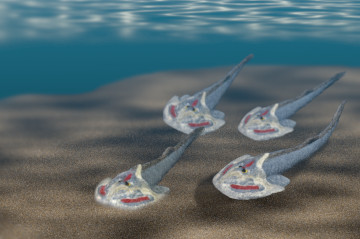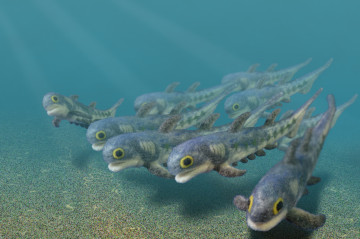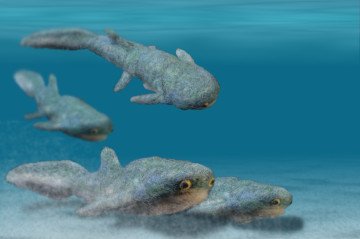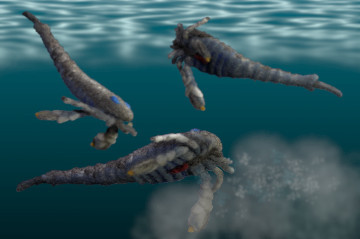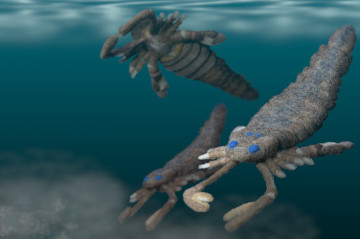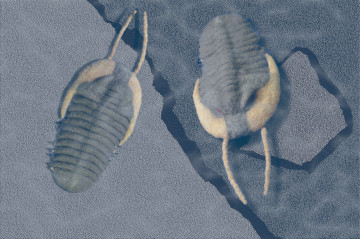- Cambrian
- Ordovician
- Silurian
- Devonian
- Carboniferous
- Permian
Silurian Period
From 443.8 million years to 419.2 million years ago.
The Silurian period was named after the Welsh Celtic tribe, as the Ordovician was.
During the Silurian, Gondwana covered the southern hemisphere, and the landmasses which would make the North America, northern and central Europe continued to come close each other. The regions surrounded by Laurentia (North America and Greenland), Baltica (central, northern Europe and Scandinavia) and Avalonia (western Europe) became narrow and these landmasses consequently would become the supercontinent Euramerica in the Devonian. That is, the Caledonian Orogeny progressed. Gondwana still stayed on the South Pole, but the glacies almost melted, the sea level increased and the broad shallow sea and inland seas were formed. This provided new niche for the organism. The silurian was mild climate through this time.
In this period, the first coral reef was created, and many mollusks, agnathans (jawless fish, e.g. Cephalaspis) spread rapidly. Furthermore, fish with jaws, such as acanthodians (or spiny sharks, e.g. Climatius), and also freshwater fish appeared. What reigned over the ocean food web would have been the large arthropods, Eurypterids (or sea scorpions, e.g. Eurypterus, Pterigotus), would have reigned the ocean food web.
During the Silurian, the basis of the terrestrial ecosystem have been established. The primitive plant 、subsequentl, the small invertbrates invented the way to use oxygen directly from the atmosphere.
The first plant on land had no leaves, no vascular system. During the end of the Silurian or the Early Devonian, this tissues of vascular bundle to transport water and nutrients, which is common to modern plants, were invented. It made a considerable inovation to the terresterial ecosystems.
Following the plants, small arthropods, such as primitive centipedes and arachinids, relatives of spiders, became pioneers, and they build up the terresterial food web.
Although the climate were generally mild and stable throughtout the Silurian, it does not case that there was not climate fluctuation, and minor extinctions also occured.
References:
- National Geographics
- Pappas S (2013) Paleozoic Era: Facts & Information Live Sience June 20, 2013
- Smithsonian Environmental Research Center Forces of Change - Atmosphere -
- UCMP - University of California Museum of Paleontolgy - (Legacy Exhibits Online, Tour of Geologic TIme)
- International Commission on Stratigraphy - International Chronostratigraphic Chart v 2023/06.

